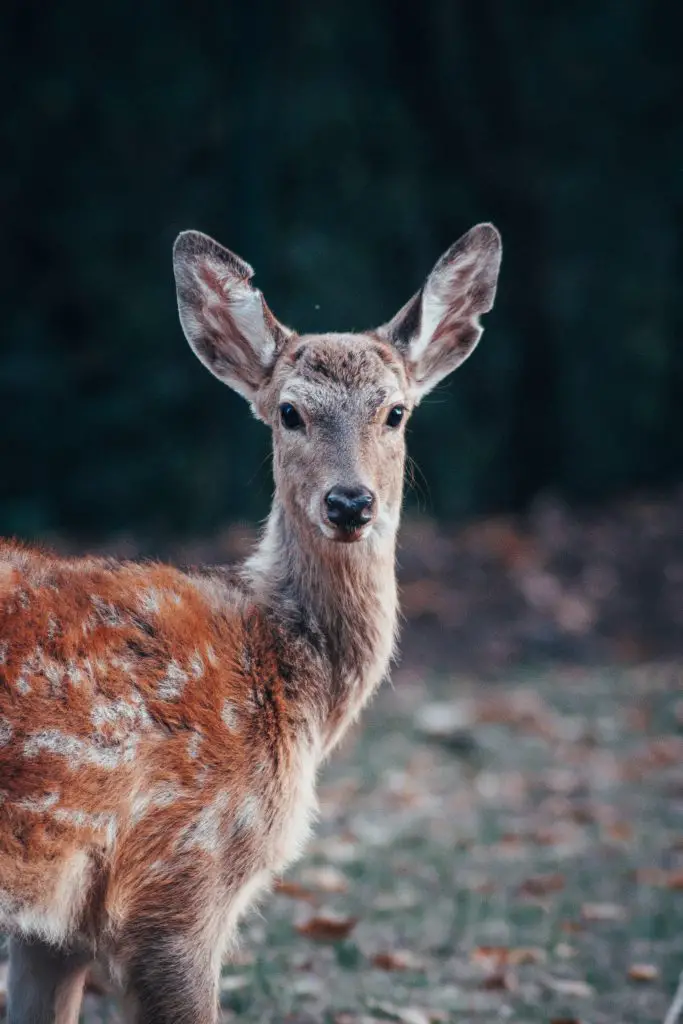Do Deer Eat Bamboo? And How To Protect It. Bamboo is one of the fastest-growing plants in the world and is a really useful addition to any garden as it provides beautiful foliage and is also an excellent screening plant. However, if you live in a location that has a large deer population will the deer eat the bamboo?
Bamboo plants are considered to be relatively deer-resistant according to the New Jersey Agricultural Experimentation Station which classifies the plant as “seldom severely damaged”. This essentially means that deer will eat the plant, however, it is certainly not their favourite food and so it is not often eaten unless there is very little other food available or the population of the deer in your location is extremely high.
Given the plant is relatively deer resistant it is one of those plants which will be useful to help protect and shield other parts of your garden as most varieties are relatively tall and will prevent animals from seeing into other parts of your garden where there are more attractive plants on offer.
If you were going to put bamboo in I would highly recommend that you use a clumping variety rather than a running variety as they can be quite invasive and difficult to control in certain circumstances.
However, bamboo is not completely immune from deer attacks and therefore it is still a good idea to put some degree of protection around these plants to reduce the chances of having problems.

How To Protect Bamboo From Deer
There are a number of ways to reduce the potential damage that deer can do to your bamboo and also other plants in your garden. However, as deer are a persistent pest most of the methods are not 100% effective.
The one exception is fencing, provided that the fencing is sufficiently strong and also tall enough. As deer are known to be very good jumpers you will need to put in an 8 ft fence to keep them out. This height may seem excessive however academic studies have shown that the vast majority of deer can clear a 6-ft fence. To read more about this click here.
However, as fences of this size are often impractical for many property owners because of the expense it is often necessary to resort to other methods to discourage deer from entering your garden.
The most obvious method, which was mentioned earlier in the article, is to plant deer-resistant plants in the outer parts of the garden which are the areas that the deer encounters first. If there is nothing particularly appetising on offer they are less likely to enter your garden.
Generally, deer do not like to eat plants that are toxic, fragrant, or thorny so it is advisable to plant things like lavenders Rosemary and other scented herbs as well as things like foxgloves that are poisonous.
As mentioned earlier in the article it is ideal to have taller plants at the outer part of the garden as it prevents the deer from seeing things that they find more appetizing.

Conversely, it is also a good idea to plant those things the deer like to eat, such as hostas close to your house as your day to day activity will encourage the deer to avoid the area.
If you have particularly prized plants, which are known to be susceptible you can also individually protect them using netting of some sort. Beyond these measures, you can also consider implementing deer repellent systems which can be divided into two main categories chemical repellents and mechanical repellents.
Chemical Repellents
Chemical repellents are generally more effective than mechanical repellents however their effectiveness does vary depending upon the particular formulation that is used.
Academic studies have looked at a range of different chemical repellents which can generally be classified into fear-inducing repellents, pain-inducing repellents and smell and taste-based repellents. Of these groups, the most effective is the fear-inducing repellents.
The fear-inducing repellents are based on ingredients such as coyote urine, blood, and putrified egg. Putrified egg is effective because it emits odours that are similar to many of the common predators of deer.
However, even the most effective repellents have a limited effect on the deer. Research has shown that the best repellents will typically only work for approximately 10 to 12 weeks before the deer begins to feed regularly again in your garden. The reason for this is that the deer becomes accustomed to the repellent. To read more about this click here.
As a result of this, we generally recommend that you buy at least two different chemical repellents for your garden. The two products that we recommend are deer out and plantskydd because they are both fear-inducing repellents that are based on different ingredients and therefore will have a different odour.
By alternating the use of the repellents every 3 months or so you can increase the chances of keeping the deer out of your garden.

Mechanical Repellents
Mechanical repellent systems can generally be divided up into three major groups which are motion-activated sprinkler systems, ultrasonic systems and other devices such as predator eyes.
The studies that have been conducted on mechanical systems have shown that they are generally not as effective as chemical repellents and generally will not affect deer behaviour for an extended period of time.
However, they can be used sparingly as part of your garden defence system if you are having serious problems with the deer as they are useful as a surprise tactic. For this to work successfully it is advisable to periodically move the position of the sprinkler systems around your garden and also turn them on and off at different times of the year so that the deer do not become tour climatised to them.
If you want to purchase a product the one we would recommend is the Orbit 62100 Yard Enforcer which has a 40 ft detection range and 120 degrees view. To see the latest price on Amazon click here.
The second system that is widely available is ultrasonic systems. They are recommended for a range of animals including deer, squirrels and rodents, however the academic research I have looked at shows that there is virtually no effect on animal activity.
Most researchers have reached the conclusion that ultrasonic devices simply do not work. As such we would not recommend that you purchase a device of this type irrespective of what the manufacturer may say about their effectiveness.

The other type of device that is sold widely on Amazon is Predator’s eyes. These types of devices do not have the same degree of academic research associated with them, as such, it is difficult to be sure about their effectiveness.
However, if you look at the reviews of many of these products customers tend to be disappointed with their performance of them. One particular example I saw had a customer posted a video of a deer at night eating plants right next to a set of predator’s eyes which seems to indicate that they are not a very effective tool for deterring the animals. Based on this we would not recommend that you purchase this type of item.
I hope you found this blog is useful, if you have any comments or questions please leave them in the section below,
Relevant Articles
How High Can A Deer Jump? (And What Type Of Fence Do I Need To Build To Keep Them Out)
Does Deer Repellent Really Work? (All The Answers Based On Academic Research)
Do Coffee Grounds Keep Deer Away?
Are Cosmos Deer Resistant? And How To Protect The Plants.
